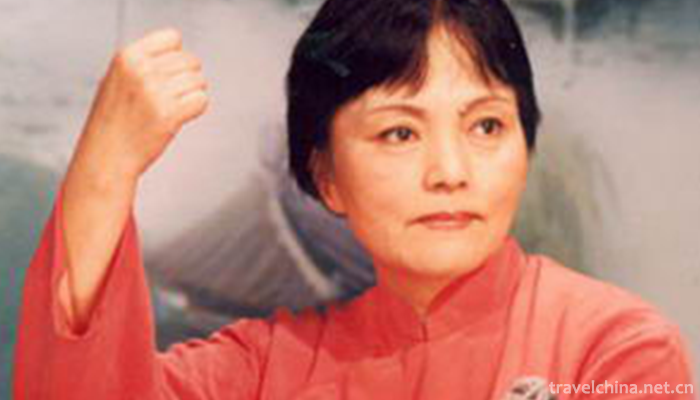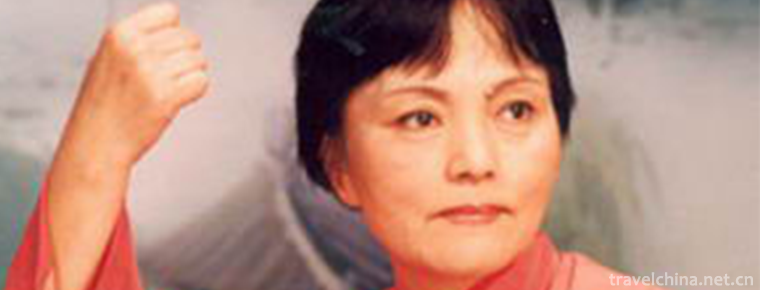Hangzhou Reviews
Hangzhou Reviews
Hangzhou Ci Commentary, commonly known as Xiaoshu, is the traditional art of rap and singing in Hangzhou, Zhejiang Province. It is a kind of folk art that tells stories in Hangzhou dialect, and belongs to the category of Tanci. It is popular in Hangzhou, Yuhang, Xiaoshan, Tonglu, Shaoxing and Zhuji.
In 2008, Hangzhou's commentary was approved by the State Council and included in the second batch of national intangible cultural heritage list.
Historical origin
Hangzhou Ci Commentary was formed at the end of Ming Dynasty and the beginning of Zhao Dynasty. It evolved from Nanci Ci and was called "document" at that time. It is also called "Qinshu" because it plays Erhu as its main accompaniment instrument.
This kind of music began to flourish in the middle of the Qing Dynasty. There were more than 80 artists in the late Qing Dynasty and the early Republic of China.
In the four years of the Republic of China (1915), the "Popular Education Society for Ci Comments" and "Guangyu Society for Ci Comments" were established, and several schools of art were formed.
In 1958, Hangzhou Ci-commenting artists all joined the Hangzhou Quyi Troupe.
Before the mid-1960s, the performance of Hangzhou Ci Commentary was still very active; from the late 1970s to the early 1980s, there were still two or three performers. At present, there are only two old artists in their eighties.
Form of performance
The form of Hangzhou's commentary is mainly composed of one person, Fans and handkerchiefs are used as props when speaking a watch, accompanied by huqin when singing, Dongxiang tune and seven-character sentences.
bibliography
Hangzhou's traditional bibliography of more than 30 long poems is roughly the same as that of other kinds of poems. But the story happened mainly in Hangzhou's "White Snake Biography" and other bibliographies. The plot and details are quite different from other kinds of operas and performances. They have Hangzhou's regional characteristics. There are also unique bibliographies such as "Red Snake Biography" and "Green Snake Biography". There are also many unique "poems of mentioning Tang Dynasty" reflecting Hangzhou's local customs. Traditional bibliographies are mostly based on boudoir love, gifted scholars and beautiful women. For example, "Double Pearl Phoenix", "Pearl Tower", "Golden Seal", "White Snake Biography", "Pink Dressing Tower", "White Crane Picture", "Double Golden Flowers" and so on, a book can be said to be less than fifteen days, more than one month. Creating new books include Bitter Cauliflower, Plain Gunshooting and so on.
Inheritance significance
Hangzhou Ci Commentary has a long history. Its performance form, rap and singing skills, singing and accompaniment music, as well as book (song) catalogues, are unique in Chinese Ci and Quyi, and have great protection, inheritance and research value.


-
1.The Mutianyu Great Wall
The Mutianyu Great Wall in Beijing is located in Huairou District of Beijing, 73 kilometers from the urban area of Beijing. With a long history and splendid culture
Time 2018-11-24 -
2.Harbin Sun Island Scenic Area
Sun Island Scenic Area is located on the North Bank of Songhua River in Harbin City, Heilongjiang Province, with a total area of 88 square kilometers, of which the planned area is 38 square kilometers
Time 2018-12-05 -
3.Lingyun Mountain Scenic Area
Lingyun Mountain Scenic Spot is located in Gaoping District of Nanchong City, with an area of 20 square kilometers and a total investment of 300 million yuan. The scenic spot is dominated by Lingyun M
Time 2018-12-26 -
4.Tianjin Italian Style Area
Tianjin Italian Style Area is located in Hebei District of Tianjin City. It is a quadrangular area surrounded by Wujing Road, Boai Road, Shengli Road and Jianguo Road in Hebei District. There are near
Time 2019-02-21 -
5.Cangzhou Wushu
Cangzhou people have been known for their simplicity, integrity, diligence and bravery since ancient times. Because of the relationship between geography and historical conditions
Time 2019-04-04 -
6.Fire tiger
Fire tiger is a traditional folk dance form spread in Fengtai, Anhui Province. One of its greatest characteristics is the word "fire". Performers often wear tight, thick clothes and tie tige
Time 2019-05-05 -
7.Manchu embroidery
Manchu embroidery, commonly known as "needle embroidery", "tie flowers" and "embroidery", was originally popular in the vast rural areas where Manchu people lived togethe
Time 2019-05-16 -
8.Shaoyuan mythological group
Shaoyuan myth group is one of the ancient Chinese myths and legends. Refers to the general name of the creation myths and mythological prototypes circulated in Shaoyuan Town, Jiyuan City, Henan Provin
Time 2019-06-14 -
9.Dagu Glacier
Dagu iceberg scenic area is located in Heishui County, Aba Tibetan and Qiang Autonomous Prefecture, Sichuan Province, China, 102.44.15-102.52.46 E and 32.12.30-32.17.06 n, which is a rare modern mountain glacier.
Time 2020-11-07 -
10.Warm tips for Chengdu Giant Panda Base
Giant pandas live in dense bamboo forests at an altitude of 2600-3500 meters. The annual temperature is lower than 20 ℃ and likes cold and afraid of heat. When the weather is cool, the giant panda will carry out activities in the outdoor playground. When the outdoor
Time 2020-12-13 -
11.Convenient facilities and medical services of Chengdu Giant Panda Base
Chengdu Research Base of giant panda breeding has a tourist service center in the hall on the first floor of the museum, which can provide free convenience services such as microwave heating, drinking water hot water, baby carriage, wheelchair, walking stick, umbrella, needle and thread bag, etc.
Time 2020-12-13 -
12.Dazhous location
Dazhou is located in the junction of Sichuan, Chongqing, Hubei and Shaanxi provinces and the Chengdu Chongqing Economic Belt in the upper reaches of the Yangtze River. It is the "East Gate" of Sichuan opening to the outside world and a key regi
Time 2020-12-20